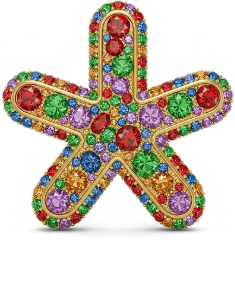Mercurial > code > home > repos > light9
view light9/curve.py @ 264:0f112a7dd6b3
fix window positoins for subcomposer and curvecalc. now saves geometry continuously
| author | drewp@bigasterisk.com |
|---|---|
| date | Thu, 16 Jun 2005 22:33:27 +0000 |
| parents | 1843386704b8 |
| children | 9de7bbf50267 |
line wrap: on
line source
from __future__ import division import sys,math,glob,random,os from bisect import bisect_left,bisect,bisect_right import Tkinter as tk from dispatch import dispatcher import run_local from light9 import Submaster, dmxclient, networking, cursors from light9.TLUtility import make_attributes_from_args from light9.dmxchanedit import gradient from light9.zoomcontrol import RegionZoom class Curve: """curve does not know its name. see Curveset""" points = None # x-sorted list of (x,y) def __init__(self): self.points = [] def load(self,filename): self.points[:]=[] for line in file(filename): self.points.append(tuple([float(a) for a in line.split()])) self.points.sort() dispatcher.send("points changed",sender=self) def save(self,filename): if filename.endswith('-music') or filename.endswith('_music'): print "not saving music track" return f = file(filename,'w') for p in self.points: f.write("%s %s\n" % p) f.close() def eval(self,t): i = bisect_left(self.points,(t,None))-1 if self.points[i][0]>t: return self.points[i][1] if i>=len(self.points)-1: return self.points[i][1] p1,p2 = self.points[i],self.points[i+1] frac = (t-p1[0])/(p2[0]-p1[0]) y = p1[1]+(p2[1]-p1[1])*frac return y def insert_pt(self,new_pt): i = bisect(self.points,(new_pt[0],None)) self.points.insert(i,new_pt) __call__=eval class Curveview(tk.Canvas): def __init__(self,master,curve,**kw): self.curve=curve self._time = 0 tk.Canvas.__init__(self,master,width=10,height=10, relief='sunken',bd=1, closeenough=5,takefocus=1, **kw) self.selected_points=[] # idx of points being dragged self.update() # self.bind("<Enter>",self.focus) dispatcher.connect(self.input_time,"input time") dispatcher.connect(self.update,"zoom changed") dispatcher.connect(self.update,"points changed",sender=self.curve) self.bind("<Configure>",self.update) for x in range(1, 6): def add_kb_marker_point(evt, x=x): print "add_kb_marker_point", evt self.add_point((self.current_time(), (x - 1) / 4.0)) self.bind("<Key-%s>" % x, add_kb_marker_point) for butnum,factor in (5, 1.5),(4, 1/1.5): self.bind("<ButtonPress-%s>"%butnum, lambda ev,factor=factor: dispatcher.send("zoom about mouse", t=self.world_from_screen(ev.x,0)[0], factor=factor)) self.bind("<Key-Escape>",lambda ev: dispatcher.send("see time", t=self.current_time())) # this binds on c-a-b1, etc RegionZoom(self, self.world_from_screen, self.screen_from_world) def current_time(self): return self._time def screen_from_world(self,p): start,end = self.zoom ht = self.winfo_height() return (p[0]-start)/(end-start)*self.winfo_width(), (ht-5)-p[1]*(ht-10) def world_from_screen(self,x,y): start,end = self.zoom ht = self.winfo_height() return x/self.winfo_width()*(end-start)+start, ((ht-5)-y)/(ht-10) def input_time(self,val): t=val pts = self.screen_from_world((val,0))+self.screen_from_world((val,1)) self.delete('timecursor') self.create_line(*pts,**dict(width=2,fill='red',tags=('timecursor',))) self._time = t def update(self,*args): self.zoom = dispatcher.send("zoom area")[0][1] cp = self.curve.points visible_x = (self.world_from_screen(0,0)[0], self.world_from_screen(self.winfo_width(),0)[0]) visleftidx = max(0,bisect_left(cp,(visible_x[0],None))-1) visrightidx = min(len(cp)-1,bisect_left(cp,(visible_x[1],None))+1) visible_points = cp[visleftidx:visrightidx+1] visible_idxs = range(visleftidx,visrightidx+1) self.delete('curve') if self.winfo_height() < 40: self._draw_gradient() else: self._draw_markers(visible_x) self._draw_line(visible_points) self.dots = {} # idx : canvas rectangle if len(visible_points)<50: self._draw_handle_points(visible_idxs,visible_points) def _draw_gradient(self): gradient_res = 3 for x in range(0,self.winfo_width(),gradient_res): wx = self.world_from_screen(x,0)[0] mag = self.curve.eval(wx) self.create_line(x,0, x,40, fill=gradient(mag, low=(20,10,50), high=(255,187,255)), width=gradient_res, tags='curve') def _draw_markers(self,visible_x): mark = self._draw_one_marker mark(0,"0") t1,t2=visible_x if t2-t1<30: for t in range(int(t1),int(t2)+1): mark(t,str(t)) mark(-4,"-4") endtimes = dispatcher.send("get max time") if endtimes: endtime = endtimes[0][1] mark(endtime,"end %.1f"%endtime) mark(endtime+10,"post %.1f"%(endtime+10)) def _draw_one_marker(self,t,label): x = self.screen_from_world((t,0))[0] self.create_line(x,self.winfo_height(),x,self.winfo_height()-20, tags=('curve',)) self.create_text(x,self.winfo_height()-20,text=label,anchor='s', tags=('curve',)) def _draw_line(self,visible_points): linepts=[] step=1 linewidth=2 if len(visible_points)>800: step = int(len(visible_points)/800) linewidth=1 for p in visible_points[::step]: linepts.extend(self.screen_from_world(p)) if len(linepts)<4: return line = self.create_line(*linepts,**dict(width=linewidth,tags='curve')) # canvas doesnt have keyboard focus, so i can't easily change the # cursor when ctrl is pressed # def curs(ev): # print ev.state # self.bind("<KeyPress>",curs) # self.bind("<KeyRelease-Control_L>",lambda ev: curs(0)) self.tag_bind(line,"<Control-ButtonPress-1>",self.newpointatmouse) def _draw_handle_points(self,visible_idxs,visible_points): for i,p in zip(visible_idxs,visible_points): rad=3 worldp = p p = self.screen_from_world(p) dot = self.create_rectangle(p[0]-rad,p[1]-rad,p[0]+rad,p[1]+rad, outline='black',fill='blue', tags=('curve','point', 'handle%d' % i)) if worldp[1] == 0: rad += 3 dot2 = self.create_oval(p[0]-rad,p[1]-rad, p[0]+rad,p[1]+rad, outline='darkgreen', tags=('curve','point', 'handle%d' % i)) self.tag_bind('handle%d' % i,"<ButtonPress-1>", lambda ev,i=i: self.dotpress(ev,i)) self.bind("<Motion>", lambda ev,i=i: self.dotmotion(ev,i)) self.bind("<ButtonRelease-1>", lambda ev,i=i: self.dotrelease(ev,i)) self.dots[i]=dot self.highlight_selected_dots() def newpointatmouse(self, ev): p = self.world_from_screen(ev.x,ev.y) x, y = p y = max(0, y) y = min(1, y) p = x, y self.add_point(p) def add_point(self, p): self.unselect() self.curve.insert_pt(p) self.update() def highlight_selected_dots(self): for i,d in self.dots.items(): if i in self.selected_points: self.itemconfigure(d,fill='red') else: self.itemconfigure(d,fill='blue') def dotpress(self,ev,dotidx): self.selected_points=[dotidx] self.highlight_selected_dots() def dotmotion(self,ev,dotidx): cp = self.curve.points moved=0 for idx in self.selected_points: x,y = self.world_from_screen(ev.x,ev.y) y = max(0,min(1,y)) if idx>0 and x<=cp[idx-1][0]: continue if idx<len(cp)-1 and x>=cp[idx+1][0]: continue moved=1 cp[idx] = (x,y) if moved: self.update() def unselect(self): self.selected_points=[] self.highlight_selected_dots() def dotrelease(self,ev,dotidx): self.unselect() class Curveset: curves = None # curvename : curve def __init__(self): self.curves = {} def load(self,basename): """find all files that look like basename-curvename and add curves with their contents""" for filename in glob.glob("%s-*"%basename): curvename = filename[filename.rfind('-')+1:] c=Curve() c.load(filename) curvename = curvename.replace('-','_') self.add_curve(curvename,c) def save(self,basename): """writes a file for each curve with a name like basename-curvename""" for name,cur in self.curves.items(): cur.save("%s-%s" % (basename,name)) def add_curve(self,name,curve): self.curves[name] = curve dispatcher.send("add_curve",sender=self,name=name) def globalsdict(self): return self.curves.copy() def get_time_range(self): return -4, dispatcher.send("get max time")[0][1]+15 def new_curve(self,name): if name=="": print "no name given" return while name in self.curves: name=name+"-1" c = Curve() s,e = self.get_time_range() c.points.extend([(s,0), (e,0)]) self.add_curve(name,c) class Curvesetview(tk.Frame): curves = None # curvename : Curveview def __init__(self,master,curveset,**kw): self.curves = {} self.curveset = curveset tk.Frame.__init__(self,master,**kw) f = tk.Frame(self,relief='raised',bd=1) f.pack(side='top',fill='x') b = tk.Button(f, text="new curve named:", command=lambda: self.curveset.new_curve(self.newcurvename.get())) b.pack(side='left') self.newcurvename = tk.StringVar() tk.Entry(f,textvariable=self.newcurvename).pack(side='left', fill='x',exp=1) dispatcher.connect(self.add_curve,"add_curve",sender=self.curveset) def add_curve(self,name): f = tk.Frame(self,relief='raised',bd=1) f.pack(side='top',fill='both',exp=1) leftside = tk.Frame(f) leftside.pack(side='left') collapsed = tk.IntVar() tk.Label(leftside,text="curve %r" % name,font="6x10", width=15).pack(side='top') def cmd(): if collapsed.get(): f.pack(exp=0) else: f.pack(exp=1) tk.Checkbutton(leftside, text="collapsed", font="6x10", variable=collapsed, command=cmd).pack(side='top') cv = Curveview(f,self.curveset.curves[name]) cv.pack(side='left',fill='both',exp=1) self.curves[name] = cv
